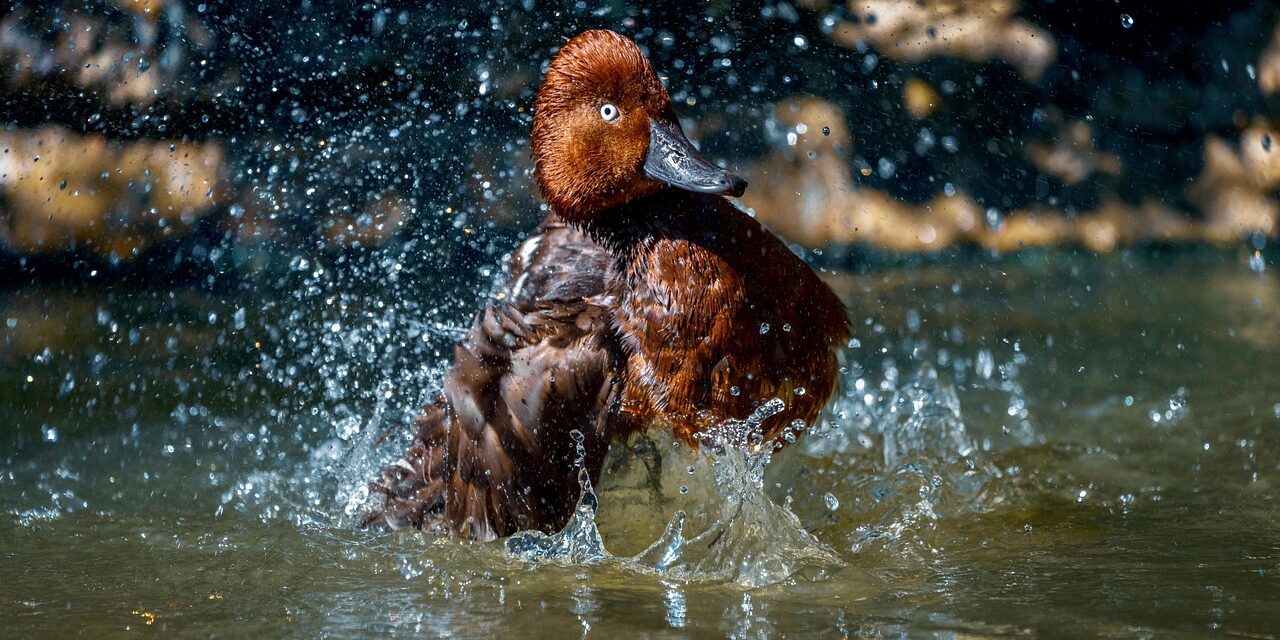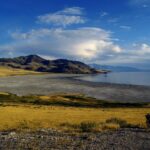Causes of Water Shortages explained
Great Salt Lake – Everything you need to know!
The Great Salt Lake: A Race Against Time
The Great Salt Lake, a majestic expanse of shimmering water in Utah, is facing an unprecedented crisis. Its once-mighty waters are steadily receding, leaving behind a stark landscape of cracked earth and receding shorelines. This shrinking lake is a stark reminder of the impact of climate change and excessive water consumption.
The Crisis:
The Great Salt Lake’s shrinking is a direct result of a combination of factors:
- Climate Change: Rising temperatures fuel increased evaporation, sucking moisture from the lake and accelerating its decline.
- Water Consumption: A growing population and expanding agricultural industry are putting immense pressure on the region’s water resources, diverting precious water away from the lake.
The Consequences:
This shrinking sea has devastating consequences for the entire ecosystem:
- Disappearing Wildlife: The lake is home to a diverse array of birds, fish, and other wildlife, many of whom are now struggling to survive in the shrinking habitat.
- Dust Storms: As the lakebed is exposed, toxic dust is easily blown into the air, posing serious health risks to surrounding communities.
- Economic Impact: The lake’s decline threatens vital industries like tourism, recreation, and salt production, impacting the local economy.
The Fight for Survival:
Saving the Great Salt Lake requires a collective effort:
- Conserving Water: Every individual and organization can contribute by adopting water-saving practices at home, work, and in everyday life.
- Government Action: Strong policies and initiatives are needed to protect the lake from further depletion, including regulations on water use and investments in sustainable water management.
- Community Involvement: Raising awareness and engaging the public in the fight to save the Great Salt Lake is crucial for galvanizing support and driving change.
The Great Salt Lake is a vital natural resource that deserves our protection. Its fate hangs in the balance, demanding immediate action to address the crisis and ensure its survival for future generations.
The Great Salt Lake: A Sea in Trouble
TL;DR: The Great Salt Lake is shrinking because of climate change and too much water use. This hurts the environment and people. We need to conserve water and use it wisely to help the lake and ourselves.
The Amazing Water Cycle of the Great Salt Lake
The Great Salt Lake is a giant, salty lake in Utah. It’s part of a special water cycle that brings life to the whole area, including Tooele County, where Stansbury Island sits.
Here’s how it works:
- Snowfall: The mountains around the lake get lots of snow in the winter.
- Melting: As the weather warms, the snow melts and flows down the mountains as rivers and streams.
- Flowing: The water flows into the Great Salt Lake, bringing fresh water.
- Evaporation: The hot sun causes the water in the lake to evaporate, leaving the salt behind.
- Repeat: This cycle repeats itself year after year.
Why is the Great Salt Lake Shrinking?
Unfortunately, the Great Salt Lake is shrinking. Here’s why:
- Climate Change: The Earth is getting warmer, and the snow in the mountains is melting faster. This means less water flows into the lake.
- Water Use: People in the area use a lot of water for farming, drinking, and other needs. This leaves less water for the lake.
What Happens When the Lake Shrinks?
A shrinking Great Salt Lake is bad news for everyone:
- Dust Storms: When the lake shrinks, dry lakebed is exposed. Strong winds can pick up this dust, making it hard to breathe and damaging crops.
- Wildlife: Many animals and birds depend on the lake for food and a place to live. A shrinking lake means they have less space and fewer resources.
- Economy: A healthy Great Salt Lake helps tourism and industry in the area. A shrinking lake can hurt these businesses.
The Fight to Save the Lake
There are many ways to help the Great Salt Lake:
- Conserving Water: Everyone can do their part by using less water at home and at work. This can save a lot of water over time.
- Innovative Irrigation: Farmers can use new technologies to use water more efficiently, keeping crops healthy while using less water.
- Policy Measures: Governments can set rules to ensure that the Great Salt Lake gets enough water to stay healthy.
Taking Action: The Active Climate Rescue Initiative
One group actively working to save the Great Salt Lake is the Active Climate Rescue Initiative. They’re working on projects to help restore the Great Basin’s water supply, including the Great Salt Lake. You can learn more about their work at climate-rescue.org.
Summary
The Great Salt Lake is a vital part of the environment and economy of Utah. Climate change and excessive water use are causing the lake to shrink, threatening wildlife, human health, and the local economy. To protect this important natural resource, we need to conserve water, use innovative irrigation techniques, and implement strong policy measures. Organizations like the Active Climate Rescue Initiative are leading the way in finding solutions to address the water shortage crisis in the Great Salt Lake region. By working together, we can ensure that the Great Salt Lake remains a vibrant and thriving ecosystem for generations to come.
More on Causes of Water Shortages…
- ## SEO Keywords: Causes of Water Shortages and Great Salt Lake
- General Keywords:
- water shortage causes
- causes of water scarcity
- water scarcity solutions
- drought impact on water resources
- water conservation strategies
- water management challenges
- climate change and water scarcity
- water security in the future
- water footprint calculation
- sustainable water use practices
- Specific Keywords Related to Great Salt Lake:
- Great Salt Lake shrinking
- Great Salt Lake water level decline
- Great Salt Lake ecosystem impact
- Great Salt Lake dust storms
- Great Salt Lake salinity
- Great Salt Lake restoration projects
- Great Salt Lake water usage
- Great Salt Lake conservation efforts
- Great Salt Lake pollution
- Great Salt Lake brine shrimp population
- Great Salt Lake bird migration
- Great Salt Lake economic impact
- Great Salt Lake history
- Great Salt Lake tourism
- Great Salt Lake research
- Great Salt Lake facts
- Great Salt Lake photos
- Great Salt Lake videos
- Great Salt Lake maps
- Great Salt Lake news
- Great Salt Lake advocacy groups
- Long-Tail Keywords:
- what are the main causes of water shortages in the Great Salt Lake region?
- how does climate change affect the Great Salt Lake water level?
- what are the environmental consequences of the shrinking Great Salt Lake?
- what can be done to prevent the Great Salt Lake from drying up?
- how does the Great Salt Lake impact the local economy?
- where can I find information about Great Salt Lake restoration efforts?
- what are the health risks associated with Great Salt Lake dust storms?
- how can I contribute to the conservation of the Great Salt Lake?
- what are the historical trends of water usage in the Great Salt Lake watershed?
- how do water rights play a role in the Great Salt Lake water crisis?
- what are the future projections for the Great Salt Lake?
- Location-Specific Keywords:
- water shortage causes in Utah
- Great Salt Lake water level Utah
- Great Salt Lake environmental impact Utah
- Great Salt Lake conservation Utah
- Great Salt Lake restoration projects Utah
- Great Salt Lake dust storms Utah
- Great Salt Lake water usage Utah
- Great Salt Lake economic impact Utah
- Great Salt Lake tourism Utah
- Great Salt Lake news Utah
- Question-Based Keywords:
- why is the Great Salt Lake shrinking?
- what are the dangers of a shrinking Great Salt Lake?
- what are the solutions to the Great Salt Lake water crisis?
- how can I help save the Great Salt Lake?
- is the Great Salt Lake drying up?
- is the Great Salt Lake a dead sea?
- what are the long-term consequences of the Great Salt Lake shrinking?
- Keyword Phrases:
- Great Salt Lake water level chart
- Great Salt Lake water level graph
- Great Salt Lake water level history
- Great Salt Lake water level forecast
- Great Salt Lake water level data
- Great Salt Lake water level maps
- Great Salt Lake water level statistics
- Great Salt Lake water level articles
- Great Salt Lake water level news
- Great Salt Lake water level updates
- Great Salt Lake water level information
- Note:** This is not an exhaustive list but provides a starting point for SEO keyword research. It is important to conduct further research and analysis to identify the most relevant and effective keywords for your specific website or content.











